This article will discuss the 15” Lodge Cast Iron Pizza Pan and the 14” Pizzori Cast Iron Plate. As these two pizza steels are both made of cast iron and include built-in handles, a proper comparison of their unique design and performance is necessary to differentiate what steel is best for the home pizza maker.
Physical Characteristics
The most obvious aspect of the Lodge pizza pan is its raised handles. These handles are made to allow you to lift the steel with both hands into and out of your oven with ease.

Bottom of Pizzori steel
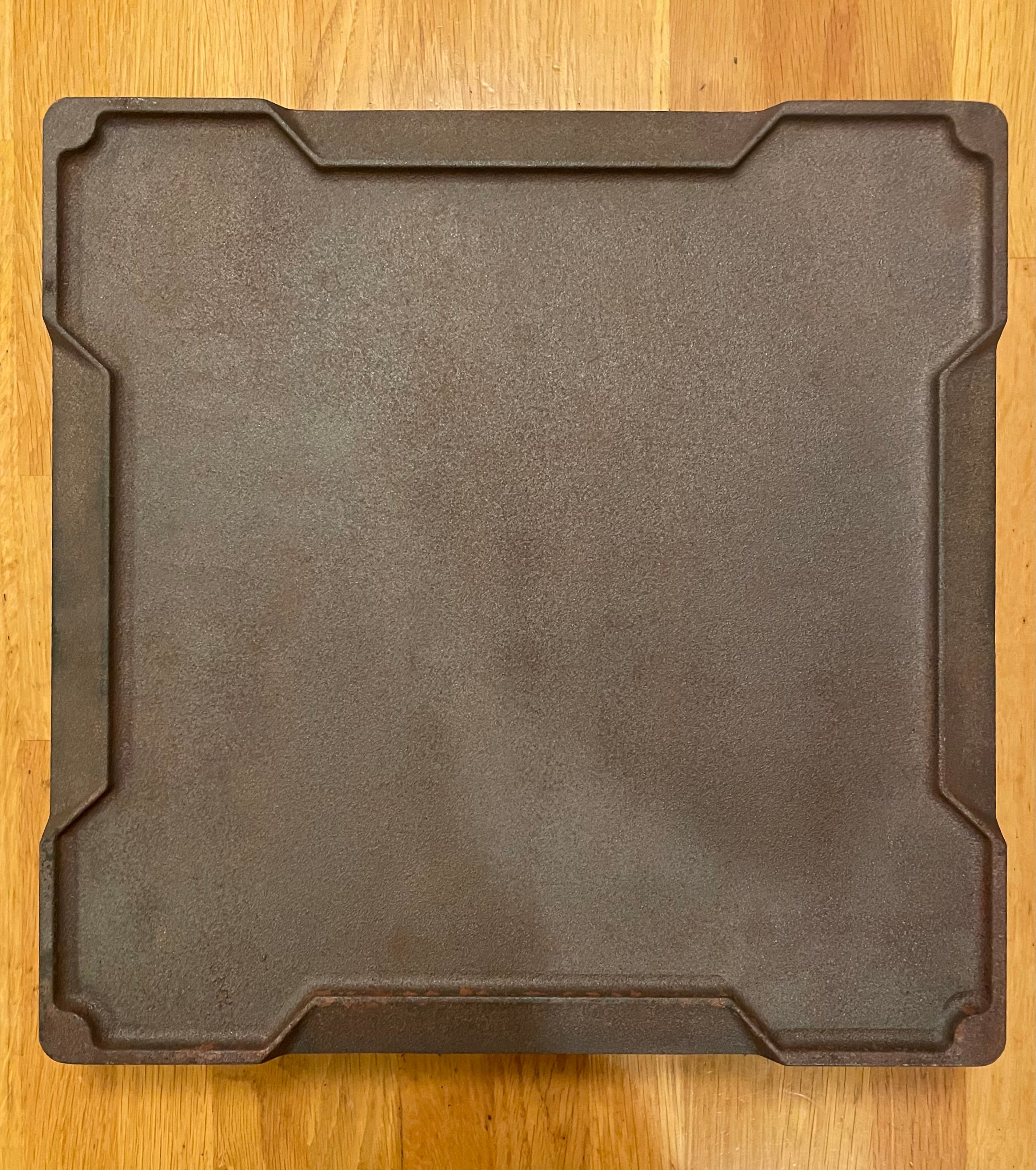
The Pizzori steel has a unique design where the handles are cut underneath the baking surface on all four sides. This allows you to grip any edge with your hands to move the steel into and out of your oven.
So, which design is superior? The handles of the Lodge pizza pan are on the smaller side, meaning the average adult hand’s fingers need to carefully get in the holes to lift the steel into the oven. The finishing on the inside edge of the handles is not smooth and pose a slight risk of cutting your finger whether moving the steel with both hands or one hand. Due to the smaller handles, it is dangerous to remove a hot Lodge pizza pan from your oven with oven mitts as there isn’t a strong edge to grip.
The handles of the Pizzori steel give you a deep enough edge to easily lift the steel from underneath and move, or carry by the edge with one hand. There are no sharp edges and as there isn’t a handle hole you need to grip to move, the Pizzori steel can easily be moved while wearing oven mitts.
Pizzori: 1
Lodge: 0
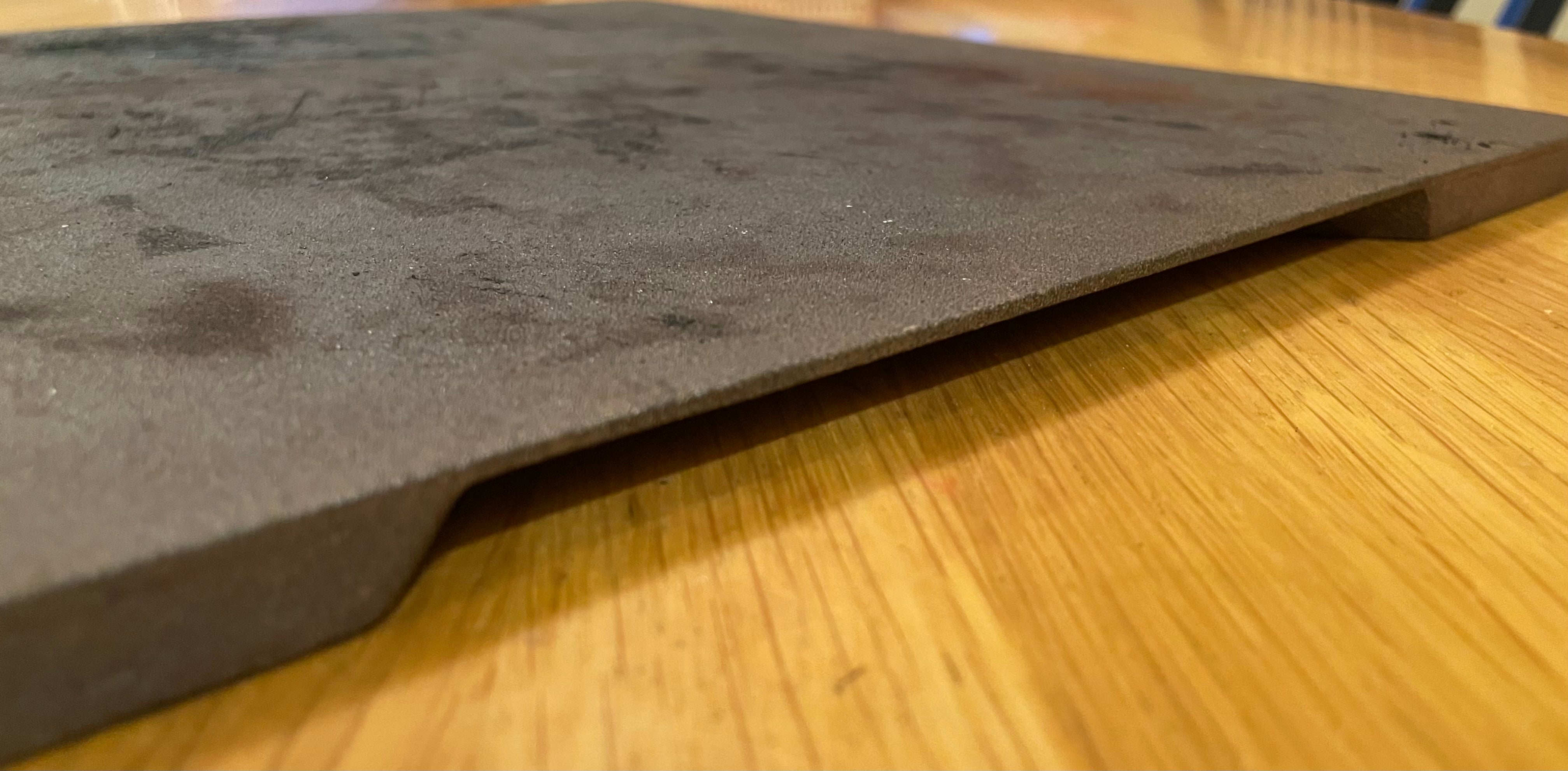
Weight Comparison
The Lodge pizza pan weighs in at 9 pounds and 14.4 ounces. While being 15” inches in diameter and having added handles, the weight is less than the Pizzori steel.
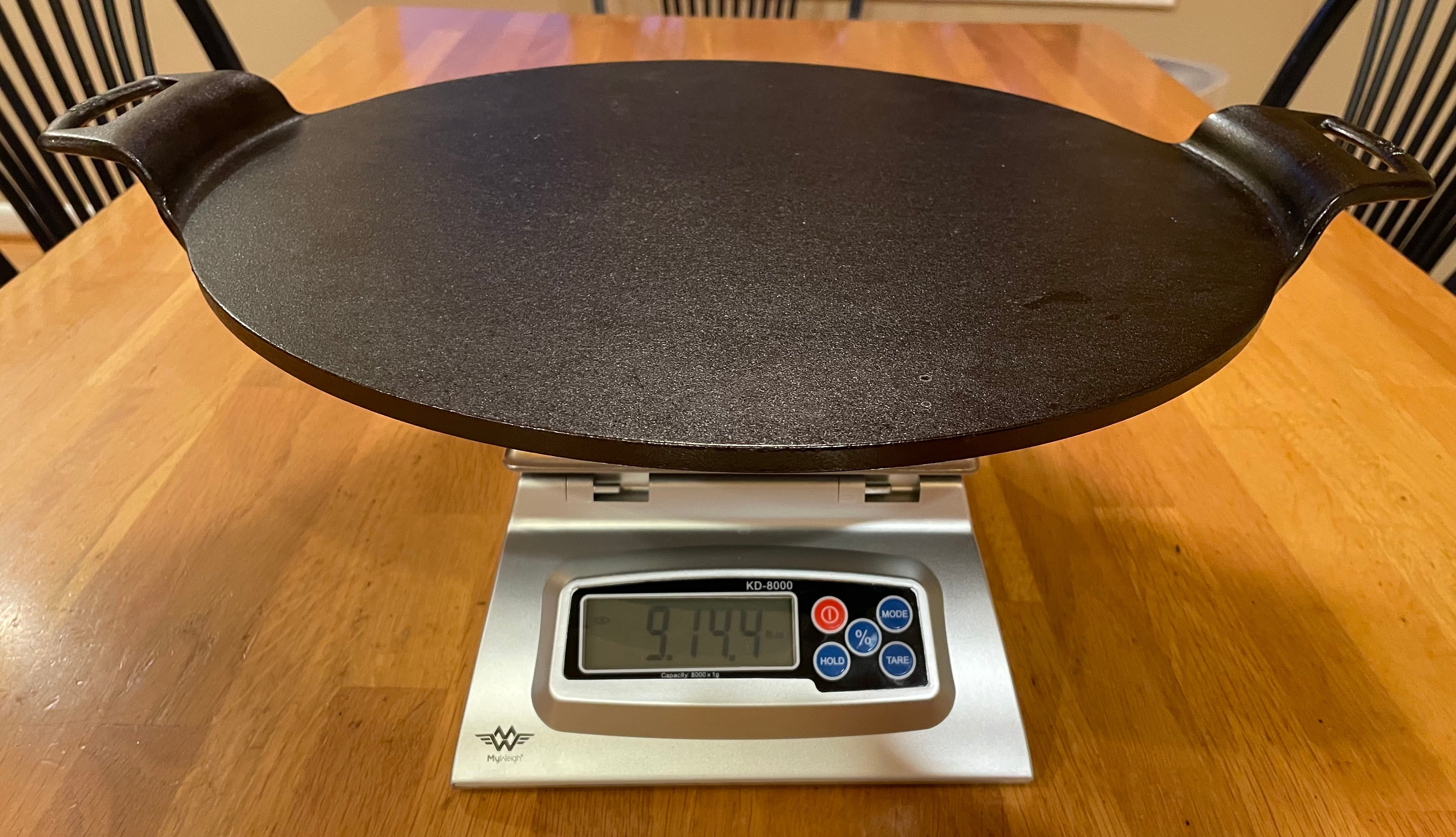
The Pizzori steel weighs in at 12 pounds and 3.9 ounces. While being 14”x14” and having a lack of added handles, the Pizzori comes in heavier than the Lodge.
Steel stores energy, in this case heat. The amount of energy it is able to store is directly correlated to its weight. Before diving into why the Pizzori weighs more, it seems to be safe to say the Pizzori will be able to put more energy into the pizza dough, baking a better pizza, based on weight alone.
Pizzori: 2
Lodge: 0
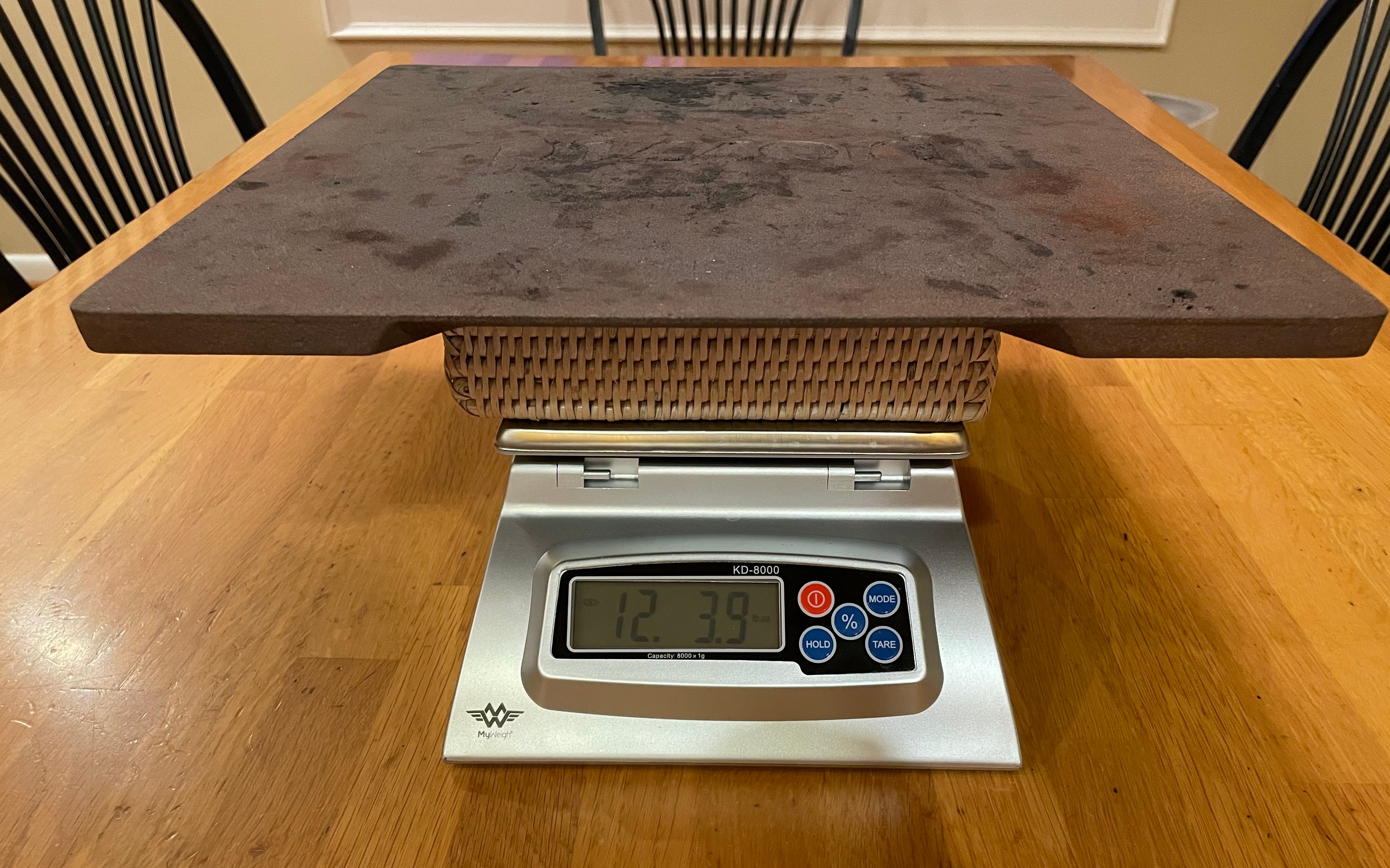
Thickness of steel
The bottom of the Lodge pizza pan is made up of two separate thicknesses. The majority of the Lodge pizza pan is 0.16” thick with the thickerrings being 0.33” thick. In general, pizza steels are not as effective when their primary thickness isl ower than ~0.25 inches.Thinner steel will lose its energy (heating ability) quicker than steel at ~0.25” and greater.
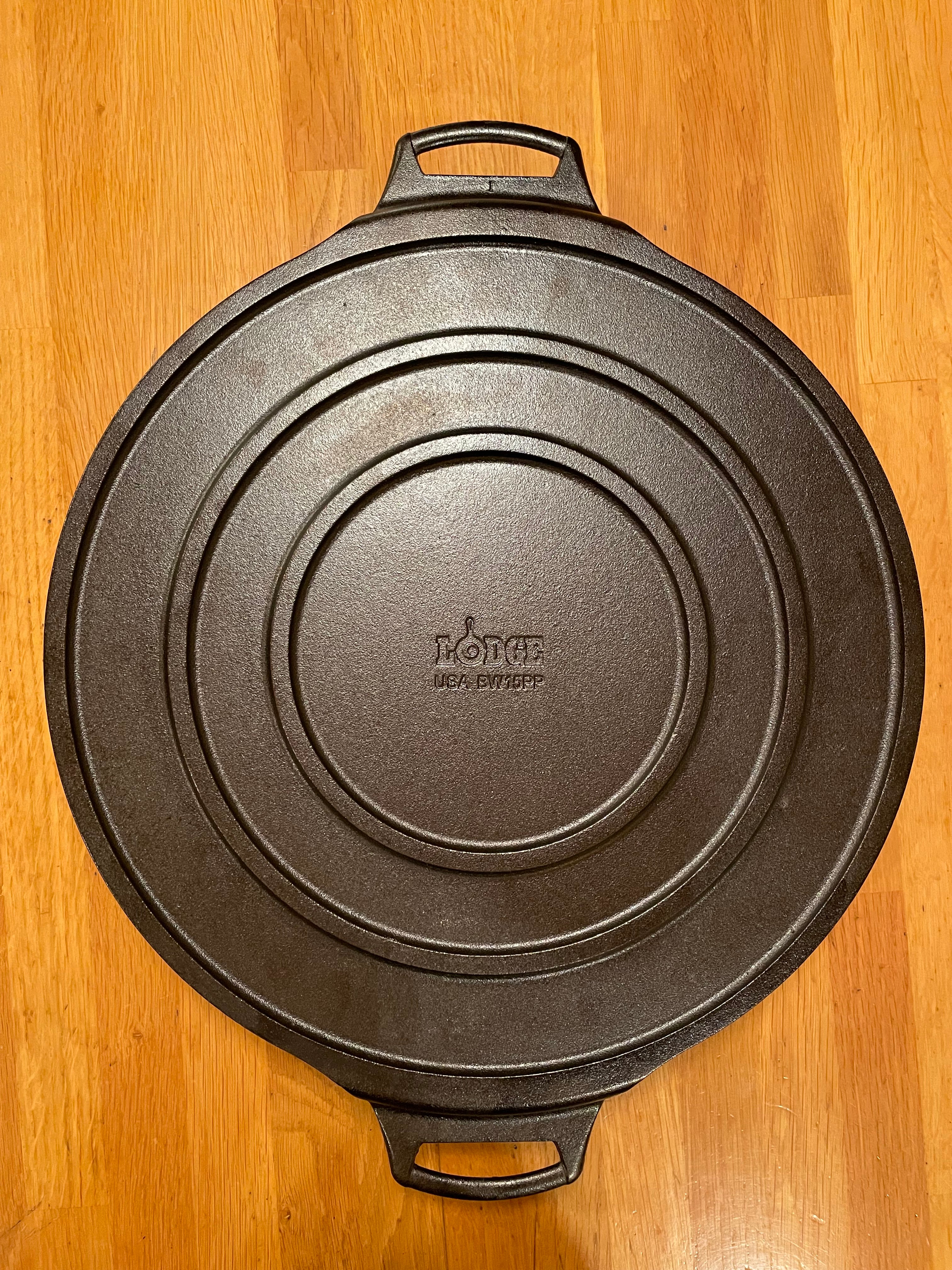
The Pizzori steel, while having two different thicknesses due to the design of its handles, is primarily 0.23” thick. The handles are 0.50” thick, but given that the pizza dough rarely lays over these handles, it can’t be said that the thicker handles have any impact on the pizza dough. The primary baking surface being 0.23” is a significant attribute as at this thickness a greater amount of energy is stored and put into the pizza dough, while not losing so much that it can’t quickly recover and bake another pizza a few minutes after the first.
This difference in thickness explains the little more than 2 pound difference in weight. If we assume the handles of the Lodge pan on their own weigh around half a pound, the Pizzori steel weighs almost 3 pounds more than the practical cooking surface of the Lodge. This means the Pizzori steel is more conductive and puts much more heat into the pizza dough.
Pizzori: 3
Lodge: 0

Steel Finish
Both pizza steels come pre-seasoned. As they are cast iron, it is important that they have a seasoning to help prevent rust and keep pizzas from sticking. The curious thing about baking at 550F+ is that, if done properly, nothing should stick to begin with and overtime the seasoning will be stripped.
Now, is re-seasoning necessary? If you’re uncomfortable with a little rust on the steel, by all means re-season as needed, but in general a little rust patch isn’t going to affect your pizza negatively and you’re going to have to stay on top of its maintenance. In my opinion, that’s a little bit too much trouble.
This comparison shouldn’t play any part in the question of “what is better?” as they are both equal in this regard. However, in practice, the surface of the Lodge actually made the pizza pan harder to work with.
The Lodge pizza pan has a slippery, pebbled finish similar to their other cast iron products while the Pizzori has a finish that is rougher (see pictures below and notice how the light reflects off the Lodge).
The Pizzori’s rougher finish creates friction on the oven rack, keeping the Pizzori in place while launching and retrieving pizzas. The Lodge’s slippery finish meant the pizza pan was sliding on the oven rack as pizzas were launched and taken out of the oven, especially when the protruding handles were accidentally bumped by the peel. After four pizzas, the Lodge had slid all the way to the back of the oven and was affecting the air flow around the pizza. This lead to the top rim of the pizza (closet to the back of the oven) to not brown at all and bake unevenly.
Pizzori: 4
Lodge: 0

Quality Control
On close inspection of the Lodge pizza pan, one handle had a notch in it - a broken off piece of cast iron during some part of the manufacturing and/or shipping process. The Lodge also had a sharp and uneven edge in one section of the steel. The handle notch could be concerning as these steels are heated at 550F+ and a weakness of the handle could become dangerous when attempting to move the steel. I don’t have any doubt Lodge would replace this steel due to these concerns, but that translates to more days not being able to make pizza.
The Pizzori arrived without any manufacturing defects and as it does not have added handles, no natural weak points exist.
Pizzori: 5
Lodge: 0
Practical Considerations
Actual cooking area. Showing A well used 14”x14” Pizzori steel a 13" peel (Pizzori) and a 14" peel (other brand).
Practical Considerations
The Lodge pizza pan is advertised at15” in diameter and it is 15” in diameter. The Pizzori is advertised at 14”x14” and it is 14”x14”. Launching a12” or 13” pizza onto the square Pizzori or circular Lodge with a 13” or 14” peel is equally as easy, provided you avoid the handles of the Lodge and don’t knock the steel around the oven.
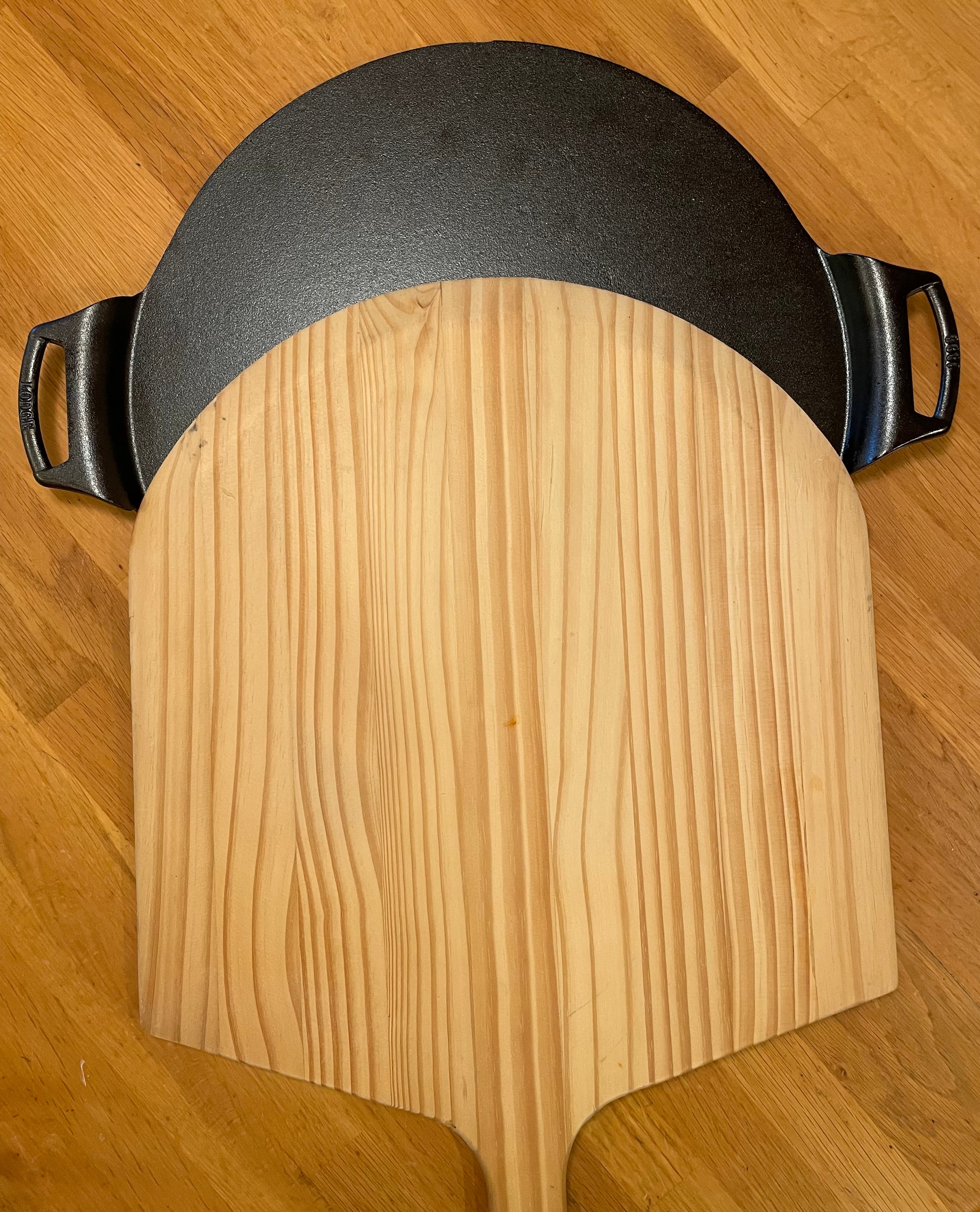
Miscellaneous considerations
Due to the handles of the Lodge and its slippery surface, rotating a pizza on it with a pizza turner is quite frustrating. Accidentally knocking the handles means the very hot steel is sliding around on you as you’re attempting to turn your pizza.
Carrying the steels also prove interesting. The Lodge, while lighter, has small handles that you need to slip your fingers into to carry. The sharp finish of the inside edge has already been touched upon, but care needs to be taken to use both hands while carrying it as the weight of the steel and the small handle can cause it to twist if you carry it with one hand.
The Pizzori can be easily picked up with one hand or two hands as the edge of the handle is deep enough to get a strong grip.
Storing the Lodge, with his protruding handles, can take a bit of planning when it arrives on your doorstep. The Pizzori, being completely flat, is able to slide between your refrigerator and wall, out of sight, or easily into a cabinet on its side. Leaving it in your oven isn’t a problem either as you can slide a larger sheet tray, pot, or pan on top of it.With the Lodge’s handles being how they are, keeping it in your oven is a bit of a hassle given how much those handles interfere.
Pizzori: 7
Lodge: 0
Performance of Lodge vs. Pizzori, and how they compare to a stone
Each of the following pizza doughs were made in the exact same way, fermented for the exact same amount of time, balled at the same weight, baked at 550F, baked for 6 minutes, and the time between each pizza being launched was kept consistent.
The pictures below show pizzas baked on a stone, on the Lodge, and on the Pizzori.
- Pizza #1 - Launched after a 1 hour preheat at 550F
- Pizza #2 - Launched 10 minutes after Pizza #1
- Pizza #3 - Launched 90 seconds after Pizza #2
- Pizza #4 - Launched 10 and 15 minutes after Pizza #3
__
See pictures below:

Pizza #1: Stone, Stone Temp. at Launch - ~600F

Pizza #1: Pizzori, Steel Temp. at Launch - ~600F
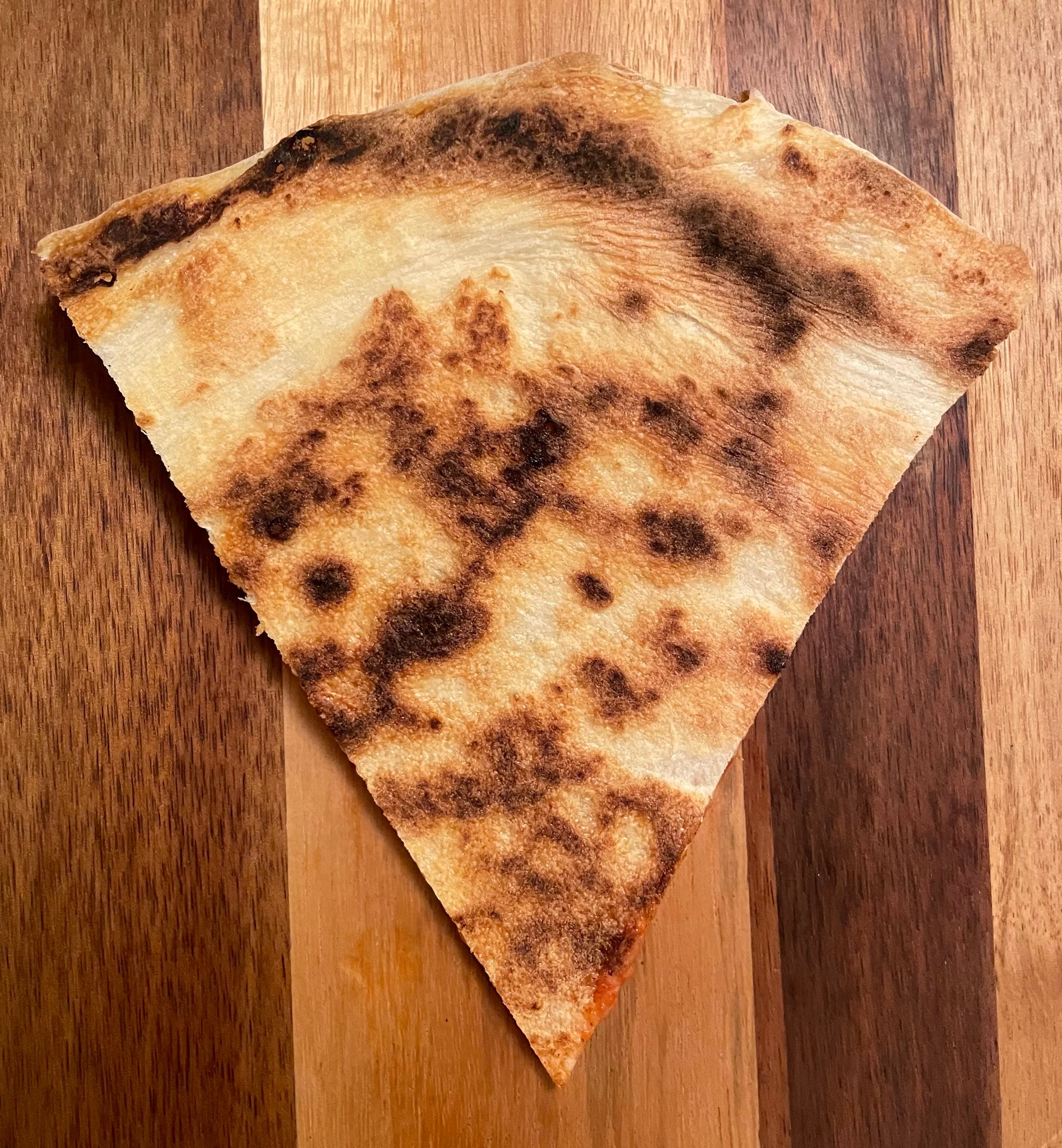
Pizza #1: Lodge, Steel Temp. at Launch - ~600F

Pizza #2: Stone, Stone Temp. at Launch - ~590F, 15 minutes between
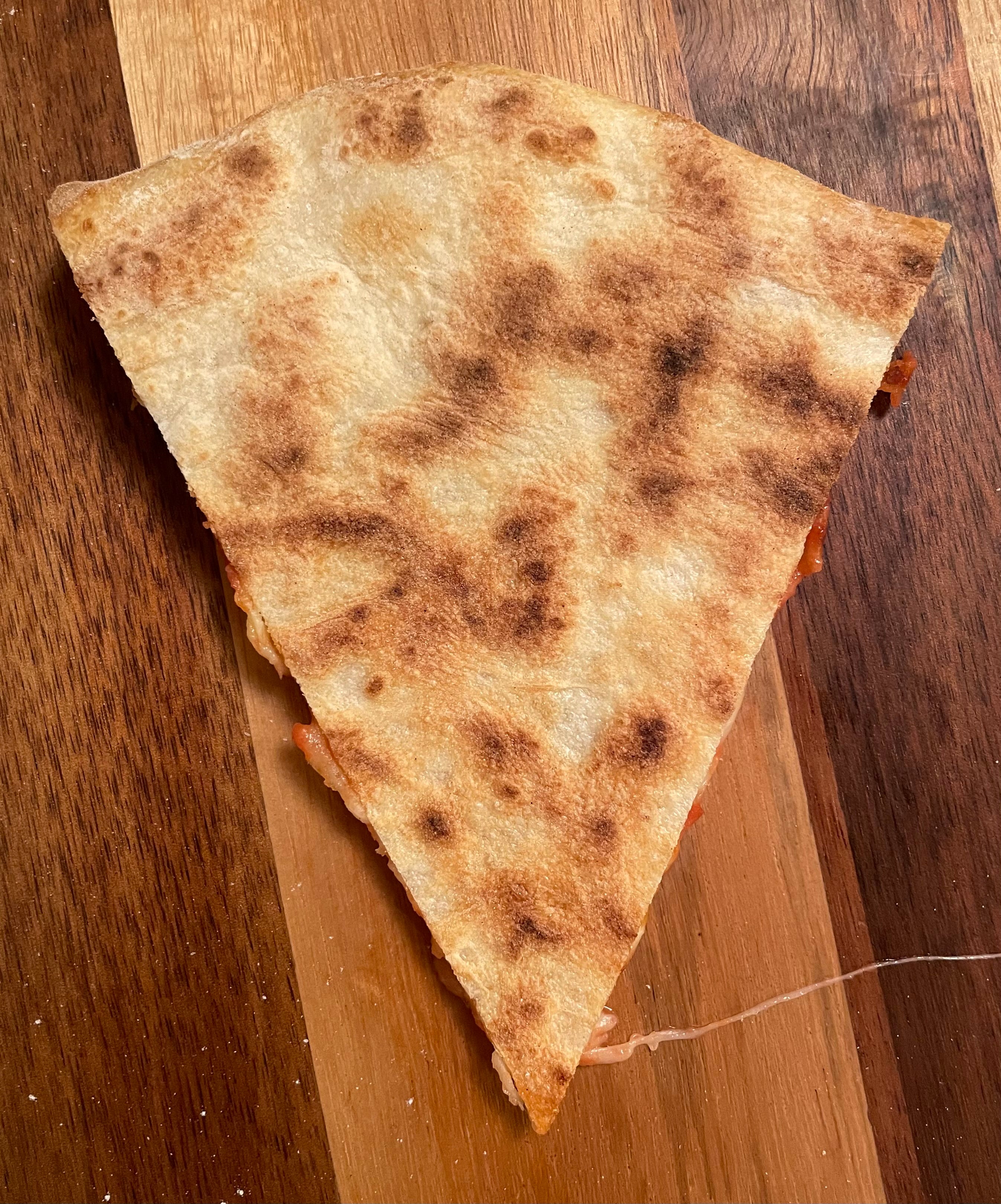
Pizza #2: Lodge, Steel Temp. at Launch - ~590F, 10 minutes between

Pizza #2: Pizzori, Steel Temp. at Launch - ~600F
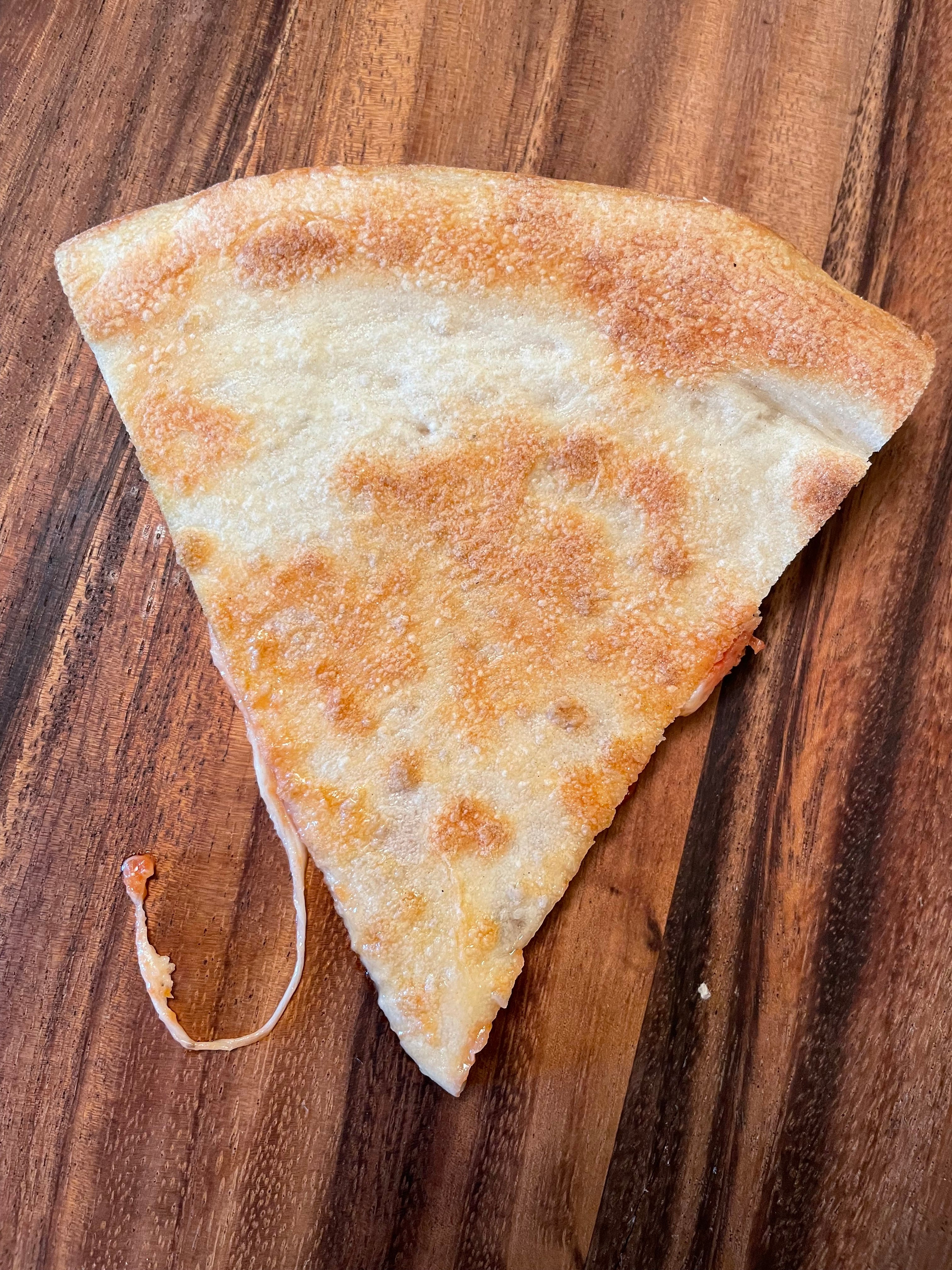
Pizza #3: Stone, Stone Temp. at Launch - ~515F
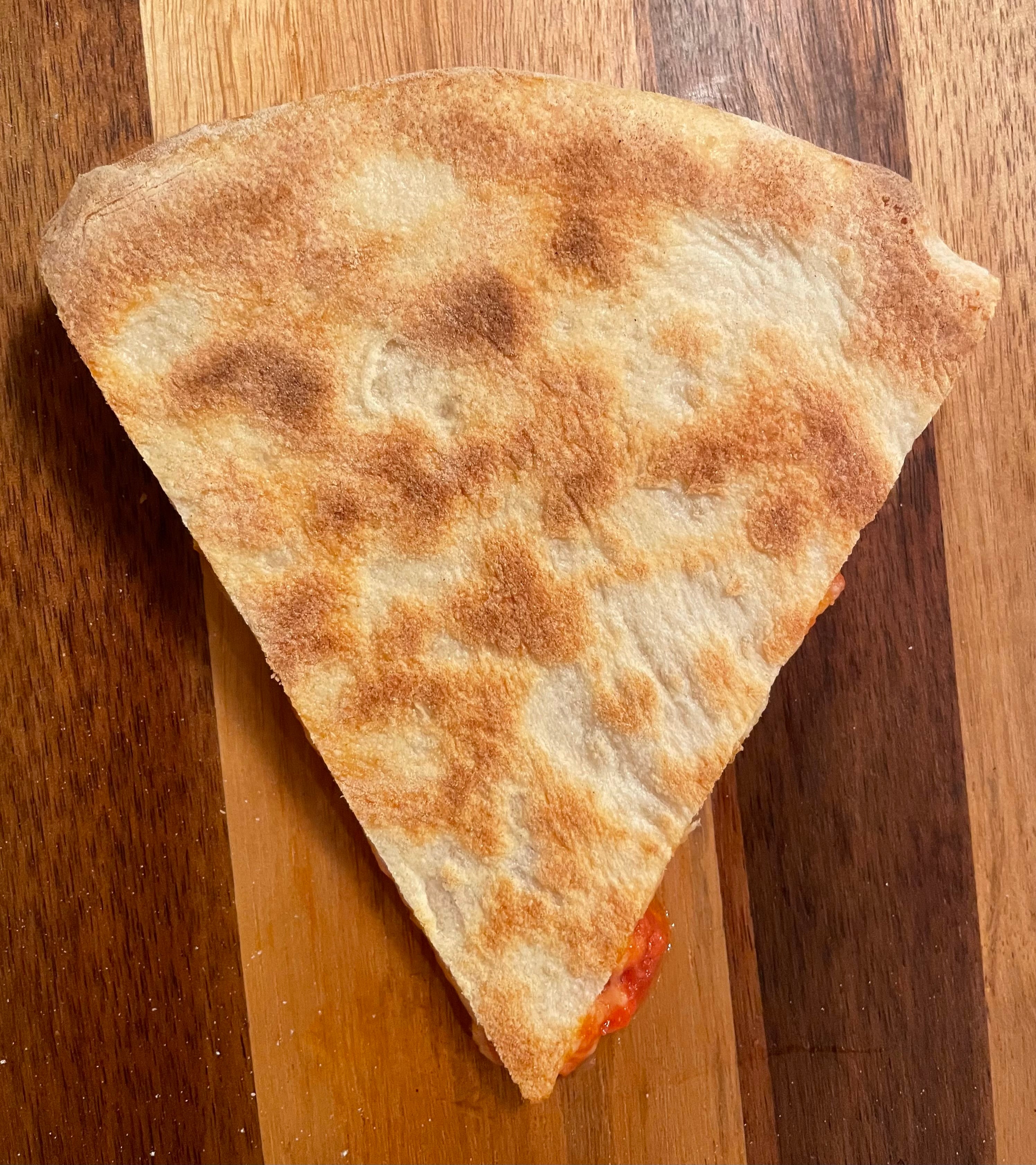
Pizza #3: Lodge, Steel Temp. at Launch - ~540F
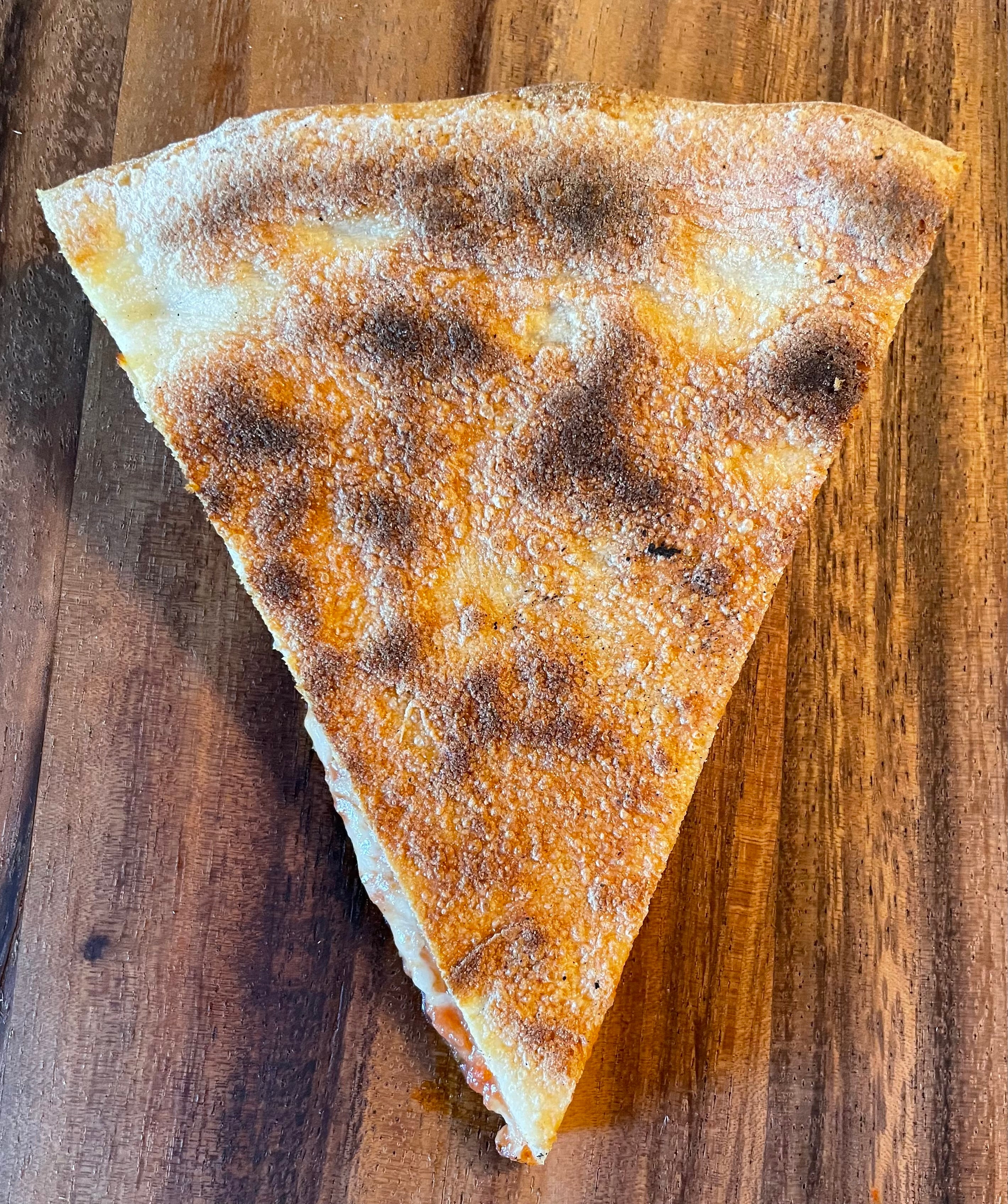
Pizza #3: Pizzori, Steel Temp. at Launch - ~560F
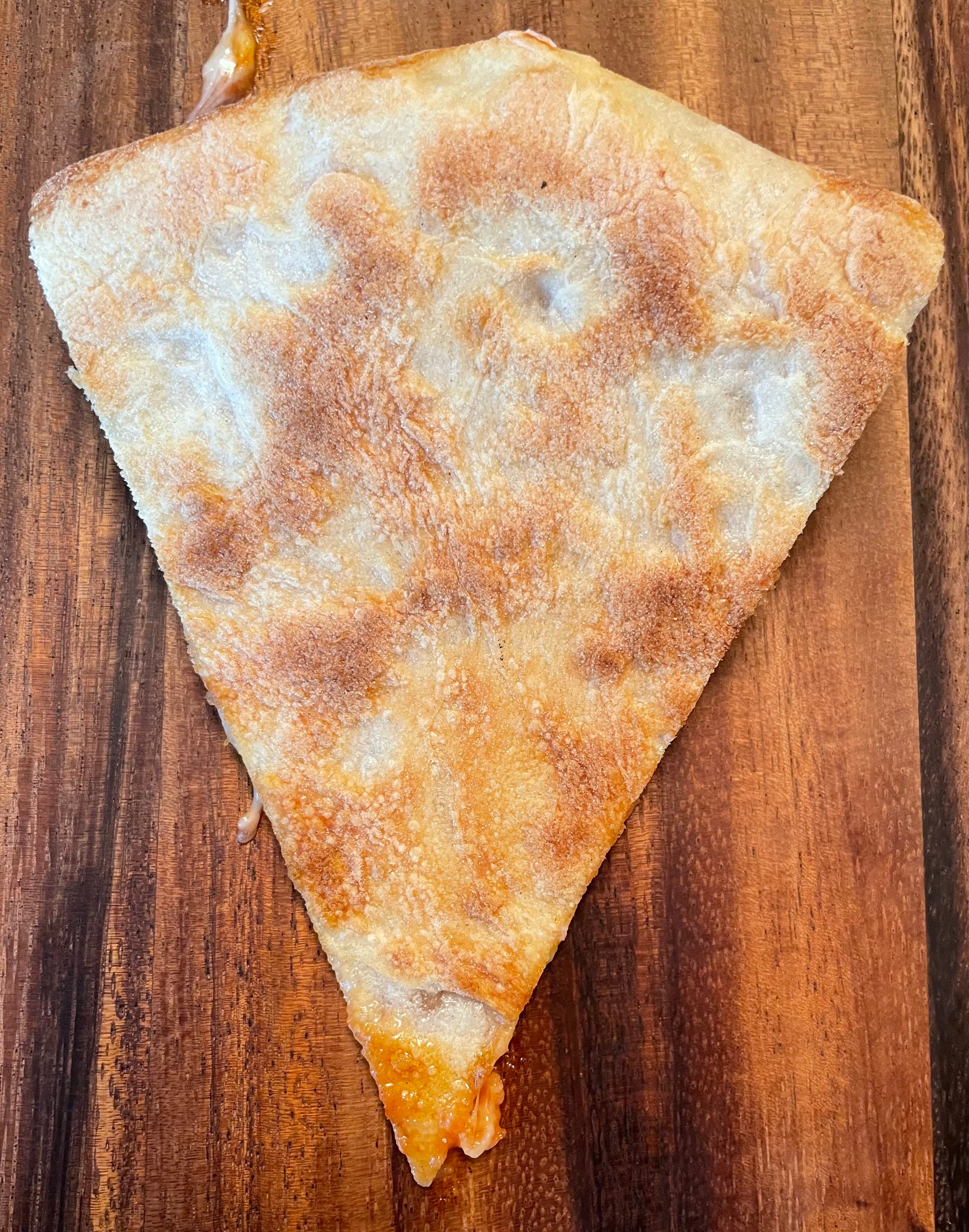
Pizza #4: Stone, Stone Temp. at Launch - ~590F, 15 minutes between
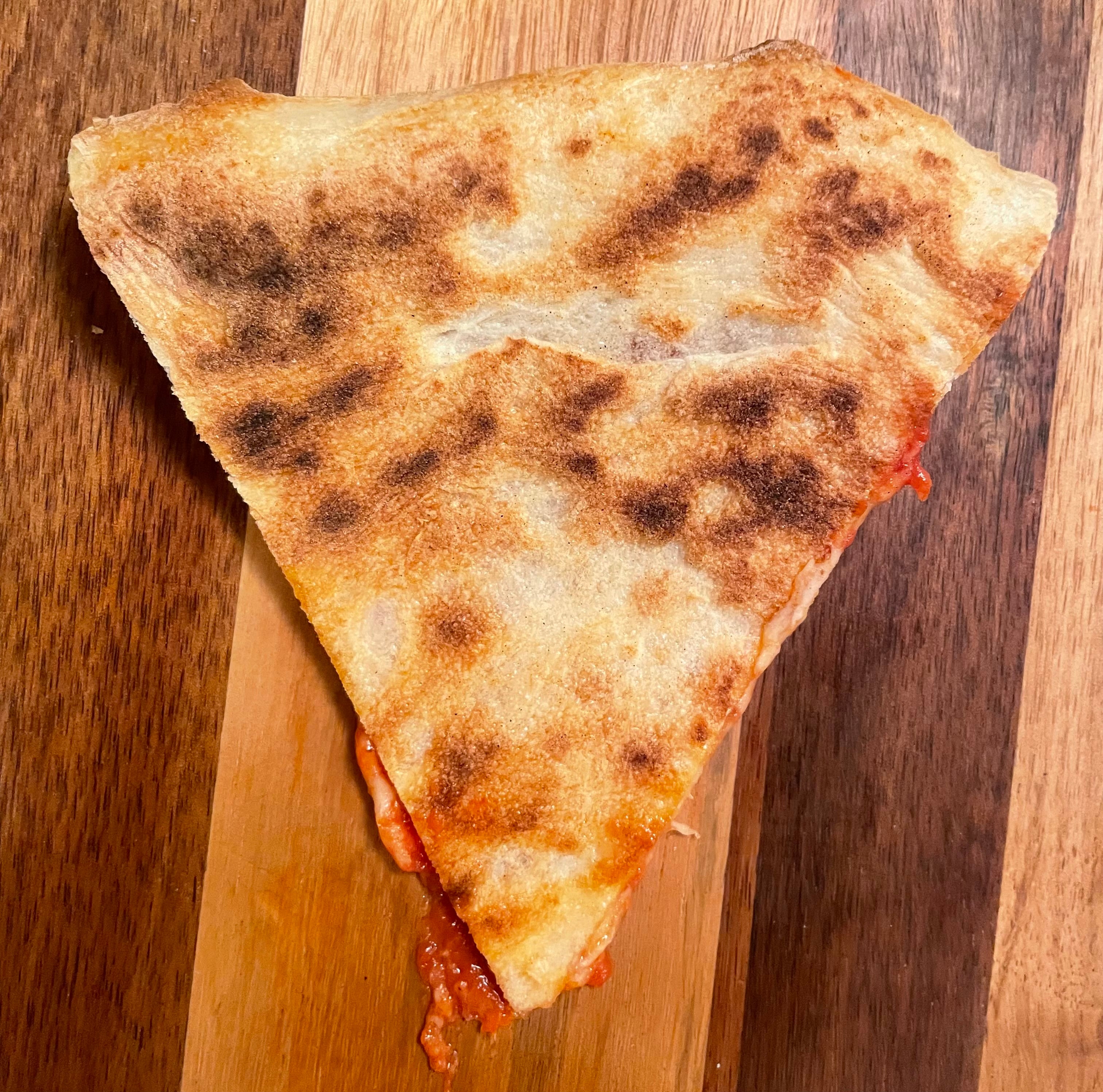
Pizza #4: Lodge, Steel Temp. at Launch - ~590F, 10 minutes between
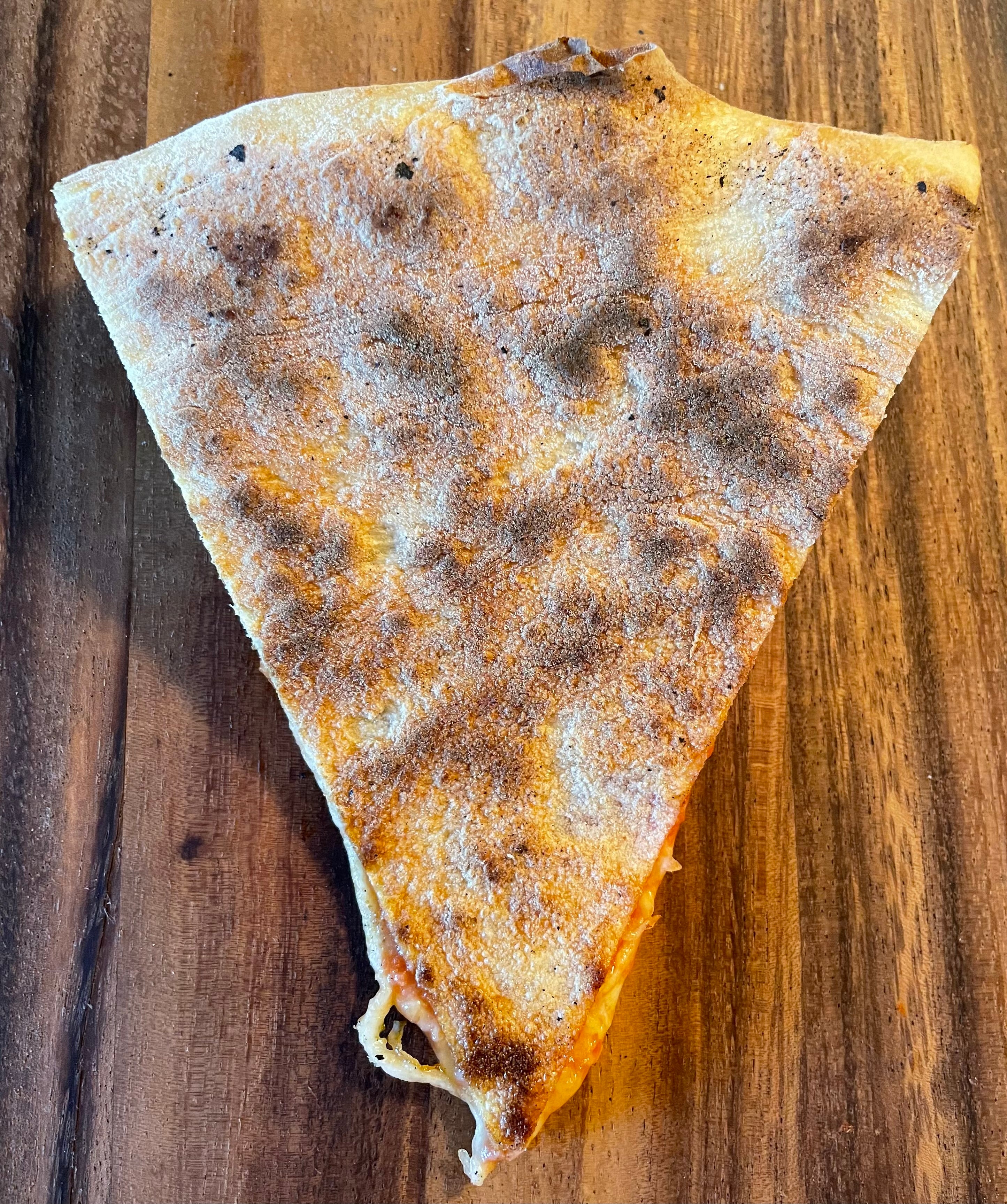
Pizza #4: Pizzori, Steel Temp. at Launch - ~600, 10 minutes between
Conclusion
Pizzori Delivers Each and Every Time
As can be plainly seen, the stone puts out pizzas that increasingly get paler as the stone is unable to recover its heat quickly enough, even with an additional 5 minutes more recovery time between the third and fourth pizza.
The Lodge, being made of steel, is able to do a much better job recovering its heat between pizzas than the stone, but due to its thinner construction and being of less mass than the Pizzori, it only slightly out paces the stone. Looking closely, you can see that in the case of Pizza #3, the stone and Lodge are almost identical.
The Pizzori made pizzas of consistent color and quality. Pizzas #1-#4 are nearly identical, regardless of the time between pizzas. Here the Pizzori’s thicker plate and heavier mass shine through, leaving the Lodge behind each and every time.
What you can’t tell from the pictures is the texture of each slice. In general, apart from Pizza #1, the stone baked pizzas were softer, chewier, and devoid of much crispiness at all. The Lodge was able to impart a crispness in each of it’s pizzas and created enjoyable slices. The Pizzori pizzas were glass shatteringly crisp, light, tender, and exactly what you’d want in a slice.
Pizzori: 8
Lodge: 0
Final Thoughts
Steel will always be better than stone for making pizzas at home. That isn’t in question. While the Lodge pizza pan and the Pizzori pizza plate are identical in their materials used and clever use of handles, the Lodge suffers from a few too many engineering decisions. The handles are small, making it somewhat difficult to grip, and get in the way of the peel when launching and retrieving pizzas. The finish is slippery on the oven rack causing it to move if you knock one of the handles with a peel. It is unable to retain as much heat or recover quickly enough due to it being thinner and lighter than the Pizzori pizza plate. The Lodge pizza pan is a step up from a stone, but the Pizzori is leaps and bounds better than a stone and leaves no question which cast iron pizza steel is superior. The Lodge is playing for second.
Robert Brown can be followed on Instagram at “@rubofthekitchen” for plenty of pizza and food related content.

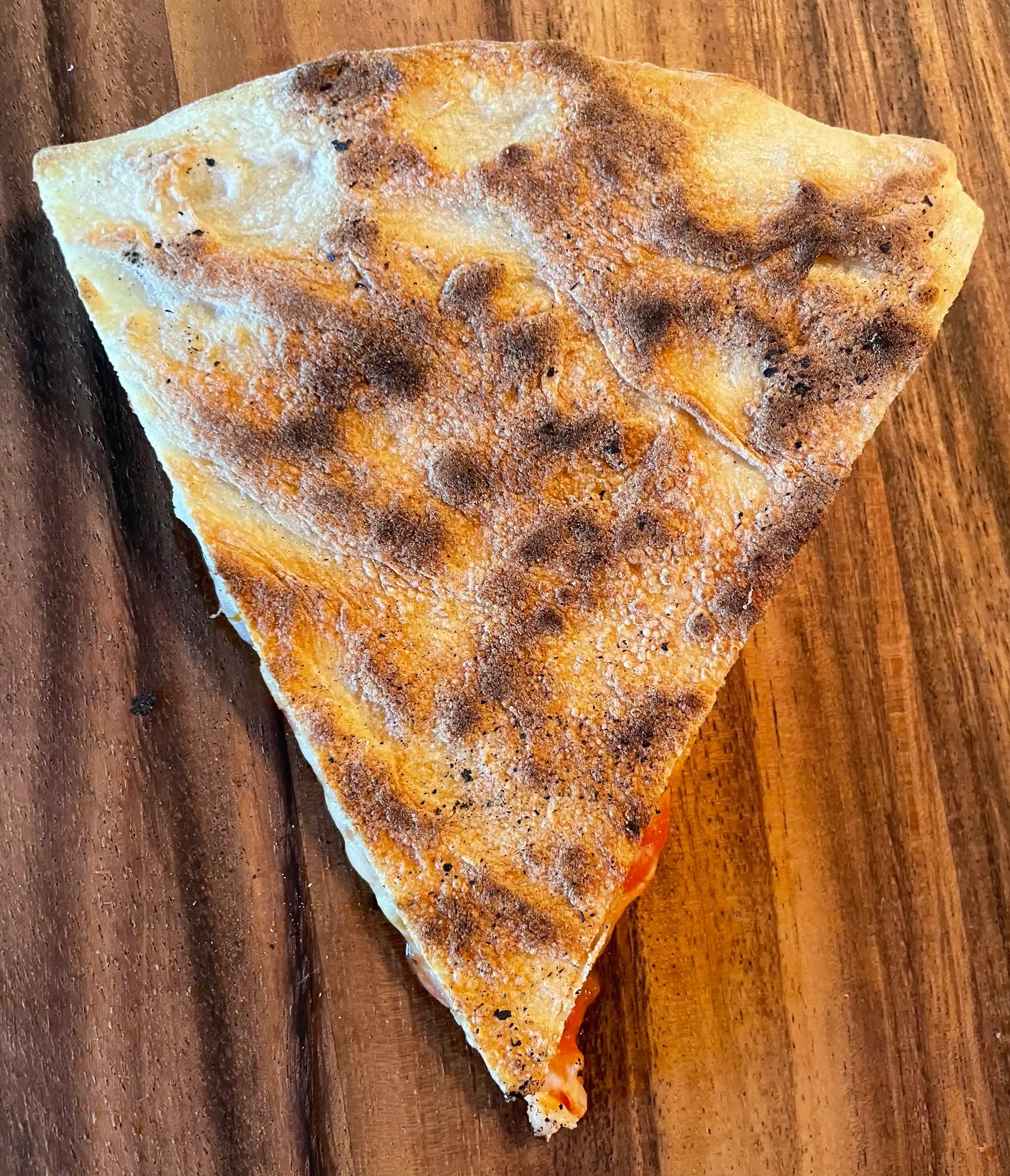
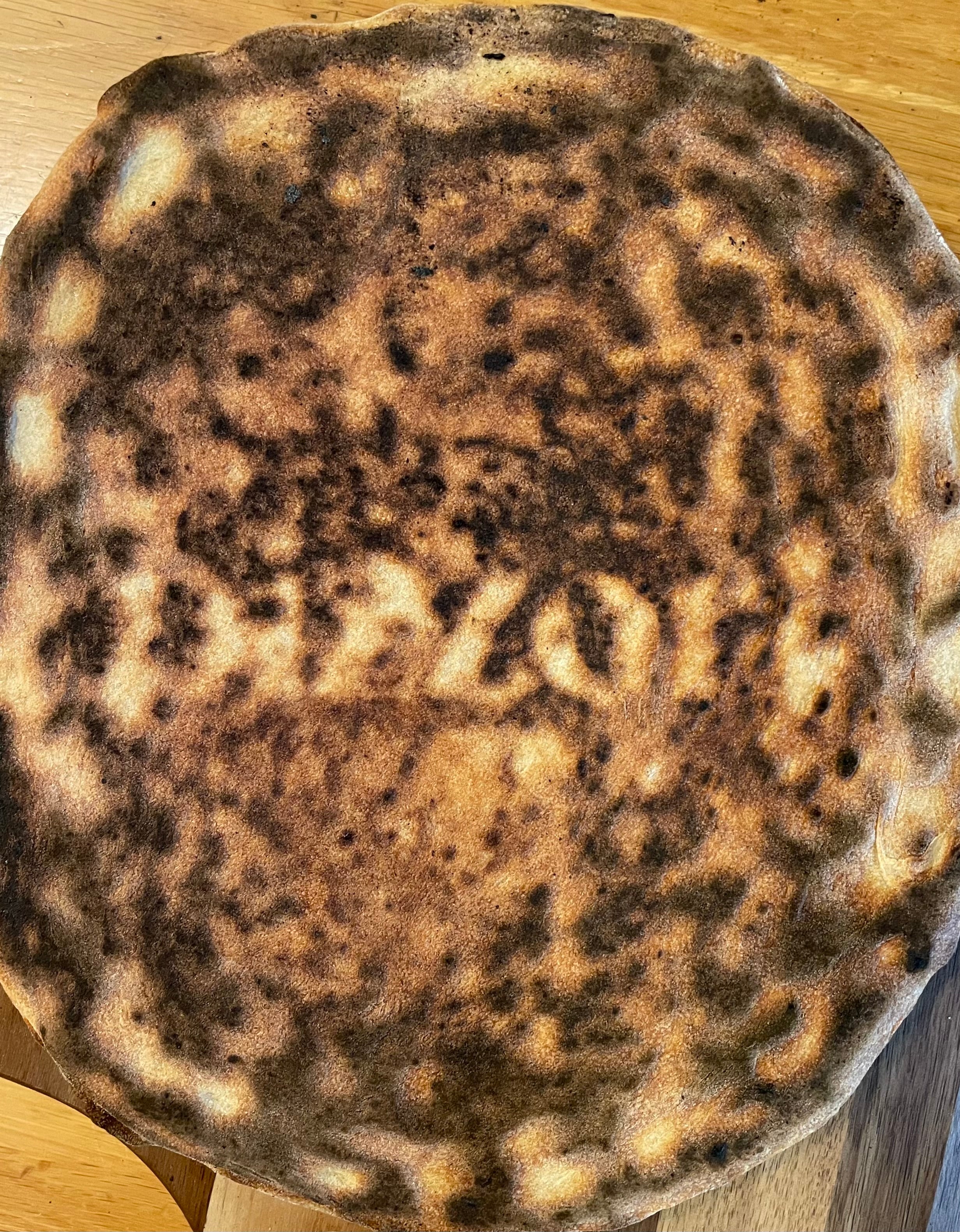












Leave a comment
This site is protected by hCaptcha and the hCaptcha Privacy Policy and Terms of Service apply.